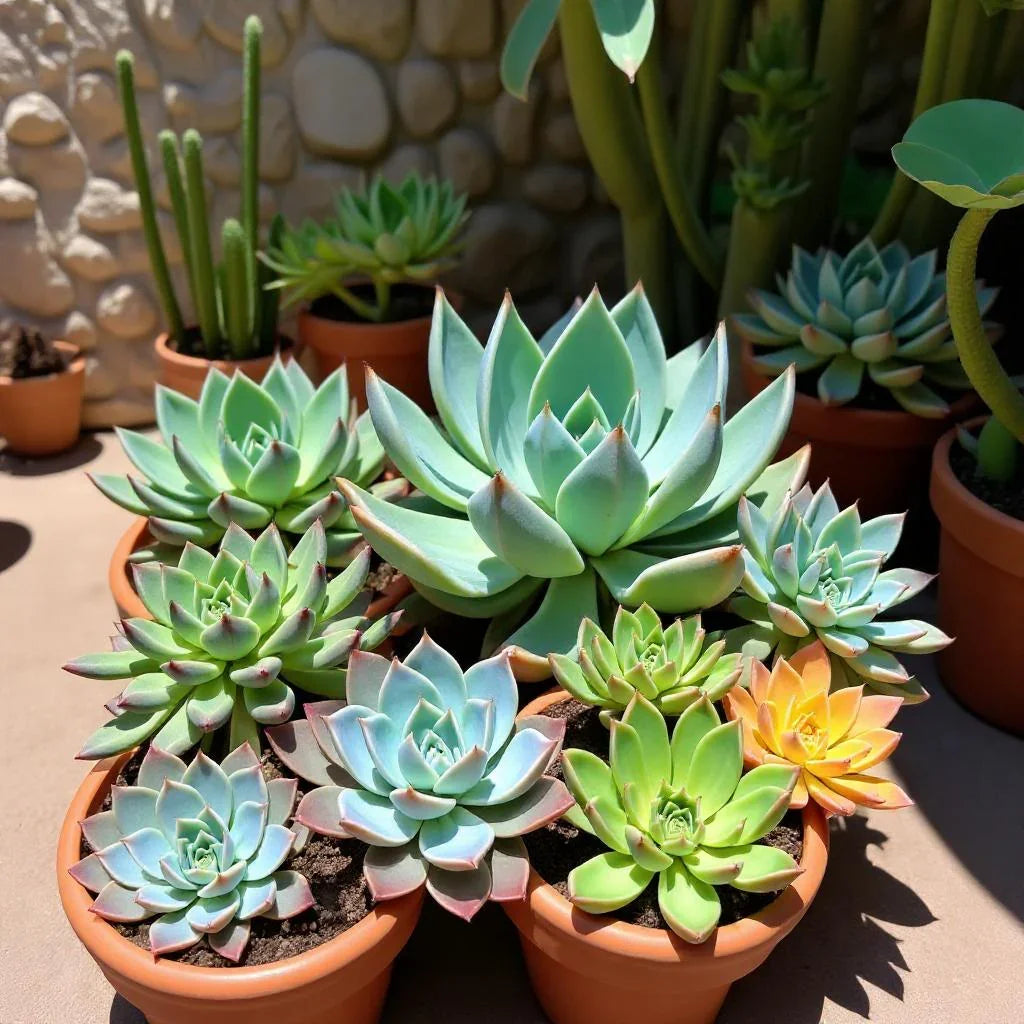
Unusual Succulents for Unique Gardens: Rare Varieties Worth Collecting
Share
Succulents have a quiet elegance that fits anywhere — but for collectors, the thrill often lies in finding something rare. Beyond familiar echeveria or aloe, there’s an entire world of unusual succulents with strange shapes, vibrant patterns, and unexpected blooms. Over the years of curating plants for Black Petals Manhattan, I’ve seen these rare varieties turn simple gardens into living art exhibits.
This guide explores rare and unusual succulents, why they stand out, and how to grow them successfully — perfect for gardeners and plant lovers who want something extraordinary.
Why Choose Unusual Succulents?
Unusual succulents aren’t just conversation starters; they bring diversity and depth to collections. Their distinct forms — from pebble-like leaves to trailing strings of beads — add visual intrigue and personal flair to gardens, terrariums, or windowsills. For urban gardeners, these plants transform small spaces into unforgettable displays.
What Makes a Succulent “Unusual”?
Unique Appearance
Rare leaf shapes, textures, or growth habits
Limited Availability
Found in specialty nurseries or regions
Distinct Blooms
Flowers or fragrances uncommon in typical succulents
Collectible Value
Sought after by enthusiasts for rarity and design appeal
Rare and Unusual Succulent Varieties
1. Lithops (Living Stones)
Lithops resemble small stones or pebbles, blending naturally into desert landscapes. Their camouflage protects them in the wild and adds novelty to collections. These succulents produce delicate daisy-like flowers and thrive in sunny windowsills with minimal watering.
Care Tips:
-
Use sandy, well-draining soil
-
Water sparingly, especially during dormancy
-
Provide bright, indirect light to maintain compact growth
2. Senecio Rowleyanus (String of Pearls)
This trailing succulent forms perfect bead-like leaves that cascade gracefully from hanging planters. It’s ideal for high shelves or window boxes where its strands can grow several feet long.
Care Tips:
-
Bright, indirect sunlight is best
-
Allow soil to dry completely between waterings
-
Trim strands to encourage fuller growth
3. Stapelia (Carrion Flower)
Known for its star-shaped flowers with bold patterns, Stapelia earns its nickname from the strong scent of its blooms — attracting pollinating flies in nature. Despite the unusual fragrance, its exotic appearance captivates collectors.
Care Tips:
-
Needs bright light and warm temperatures
-
Minimal watering; allow soil to dry between waterings
-
Handle flowers carefully — they bruise easily
4. Dolphin Succulent (Senecio peregrinus)
A playful variety with leaves shaped like tiny leaping dolphins. This rare succulent brings a whimsical touch to any collection and grows well in small pots indoors.
Care Tips:
-
Prefers partial sunlight and mild temperatures
-
Water moderately — avoid overwatering to preserve leaf shape
-
Pinch back tips to promote bushier growth
5. Euphorbia Obesa (Baseball Plant)
A spherical succulent resembling a baseball, this plant is highly prized for its symmetry and low maintenance. It rarely blooms indoors but adds striking architectural interest.
Care Tips:
-
Bright light with occasional direct sun
-
Extremely drought-tolerant — water sparingly
-
Use cactus soil for best drainage
6. Crassula ‘Buddha’s Temple’
Stacked, pagoda-like leaves make this crassula variety stand out. Its sculptural form is perfect for minimalist décor and modern arrangements.
Care Tips:
-
Bright, filtered light prevents leaf burn
-
Keep soil slightly moist during growth, drier in winter
-
Avoid frequent repotting to maintain compact shape
7. Kalanchoe Thyrsiflora (Paddle Plant)
Also called flapjack succulent, it features large, rounded leaves with red-tinged edges. Perfect for statement pieces in outdoor gardens or sunny indoor spots.
Care Tips:
-
Full sun enhances red leaf edges
-
Water deeply but infrequently
-
Tolerates drought and poor soils
Where to Display Unusual Succulents
Windowsills
Compact rare varieties like lithops and euphorbia
Hanging Planters
Trailing types such as string of pearls or dolphin succulent
Terrariums
Combine rare and common succulents for contrast
Garden Accents
Feature unusual succulents in rock gardens or modern landscape designs
How to Care for Rare Succulents
Rare succulents need the same fundamentals as common varieties — well-draining soil, moderate watering, and bright light — but some require extra attention:
Acclimate Slowly
Avoid sudden shifts in light or temperature
Research Each Variety
Care varies widely (e.g., lithops vs. string of pearls)
Monitor for Pests
Rare plants are often more valuable and worth extra care
Why Collectors Love Rare Succulents
For collectors, rare succulents represent more than plants — they’re living sculptures. Each unique variety tells a story, sparking curiosity and admiration. Whether displayed alone or mixed with familiar types, these succulents create collections that feel personal and unforgettable.
Where to Find Rare Succulents in Manhattan
At Black Petals, we specialize in sourcing unusual succulents that stand out. From lithops to dolphin succulents, our curated selection brings rare beauty to NYC homes and gardens. Visit us at 1121 1st Ave, Manhattan, or explore our online collection for doorstep delivery.
Ready to Add Rare Succulents to Your Collection?
Unusual succulents bring excitement and artistry to any space. Whether you’re seeking a playful dolphin succulent or a striking baseball plant, these varieties elevate your garden and spark conversation.
Shop rare succulents at Black Petals or visit us in Manhattan for expert care tips and exclusive varieties.
